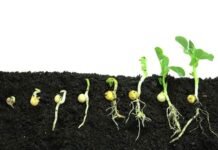According to a Global Sustainability study, more than a third of people worldwide have shifted their buying behaviour towards environmentally friendly options. Additionally, a third of Millennials – who, along with their younger Gen Z counterparts, have significant spending power – will choose a sustainable alternative when available. The study also found that 50% of consumers rank sustainability as one of their top-five value drivers, and the willingness to pay for sustainability is highest when it comes to consumer goods.
As we draw near to the end of 2022, it’s clear that sustainability remains top of mind for the conscious consumer. Renewability, recyclability, and reducing waste are becoming more appealing to those who want to put the environment first. Sustainability is a trend that can’t be ignored.
Renewable, recyclable packaging
A big part of making sustainable lifestyle choices starts with the products we buy – and what their packaging is made from. Liquid paperboard (LPB) packaging used for Nampak Liquid Cartons, for example, is made from virgin wood fibre, a naturally renewable raw material that is sourced from responsibly managed forests, certified through the Forestry Stewardship Council.
This type of forestry can play a role in addressing climate concerns, through carbon storage. The growing trees absorb more carbon dioxide than fully grown trees, and the carbon remains locked in the timber after it’s harvested, manufactured into paper products, and even recycled. In fact, responsibly managed forests often have nurseries that grow trees to take the place of those harvested at a ratio of 2:1.
Not only is LPB carton packaging renewable, but it’s also recyclable. The LPB packaging layers comprise, on average, 75 percent of virgin wood paperboard that can be recycled into items from cardboard boxes to takeaway coffee cup holders (which can then be recycled up to another six times). In addition, the gable top carton’s plastic and foil layers can be separated during the recycling process and be transformed into planks, pallets, roof tiles, and more.
Non-sustainable packaging a non-option
Along with consumer choices, extended producer responsibility (EPR) manufacturing requirements make non-sustainable packaging a non-option. In South Africa, EPR legislation came into effect last year, making it mandatory for manufacturers, producers, retailers, importers, and brand owners to ensure that their products are recovered, recycled or re-used for as long as possible.
Producer responsibility organisations (PROs) oversee regulation compliance, and Nampak Liquid Cartons has partnered with Fibre Circle, a government-recognised PRO representing the paper and paper packaging sector. Fibre Circle’s aim is to help companies adhere to the legislation, as well as support its members to embrace recycling, sustainability, and a circular economy.
Even conscious consumers make unconscious decisions
Even though there’s been a large shift in buying behaviour to more sustainable choices, it’s still important to entice those less invested in sustainability to embrace a more environmentally friendly way of consuming. And, of course, packaging plays a crucial role because shoppers – whether conscious consumers or not – often make unconscious buying decisions. Packaging is often the first physical interaction a buyer has with a product, so it needs to compel people to make a quick decision (on the shelf), or it must be a pleasant experience (using the product effectively).
A case in point is a study by Kantar, a global data, insights, and consulting company, which used behavioural science to optimise a craft beer company’s sustainable packaging efforts. They found that packaging messaging needs to mention as much sustainable information as it can but in as few words as possible, and design factors, such as colour, can appeal to those both actively and less engaged in sustainability.
Packaging is part of our everyday lives, but with a push to go green from both regulators and consumers alike, the way products are packaged is rapidly evolving. More than just a trend, sustainability is driving this change.









